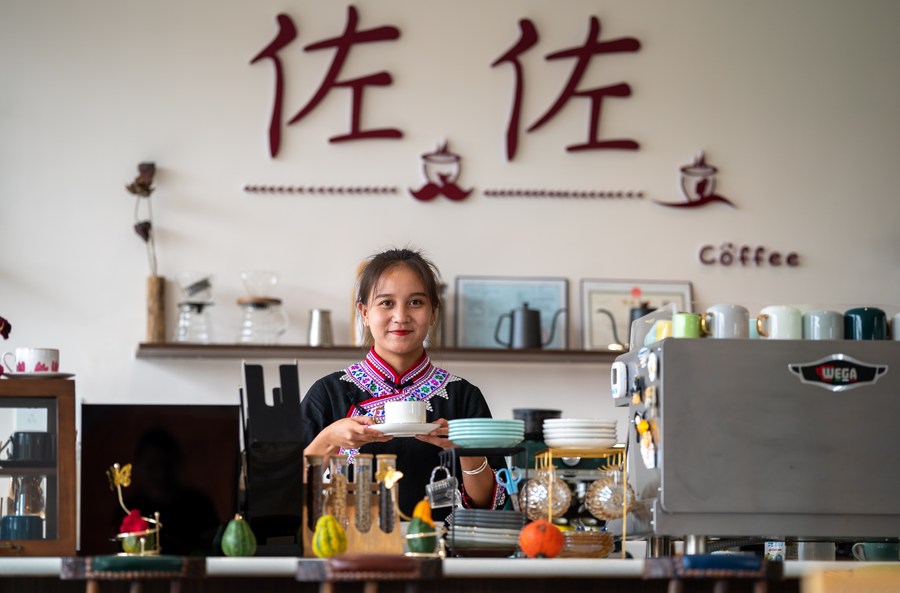

A BETTER FUTURE WITH INHERITANCES
For the locals, their traditions and the quest for modernity need not to be in conflict.
Modern development is making their unique cultures more contemporary and providing them with greater access to the outside world, breathing new life into the inheritances of ancient ethnic cultures.
In the villages of Banli and Laodabao, extra income from cultural tourism prompted renewed interest in centuries-old music and handicrafts.
The four newly established performance teams in Banli, consisting of 200 villagers-turned-dancers and reed-pipe players, are choreographing new dances to tell stories of their daily work and lives.
Li Naluo, in Laodabao, also has a new mission of training more singers of Mupamipa, the Lahu epic of creation that lacks written transcripts and relies purely on oral transmission.
Li trekked across mountains to find one of the few elderly singers who can chant the entire Mupamipa. After learning the masterwork, Li now teaches other villagers how to reproduce the epic in chorus and group dances.
"Due to social changes and difficulties in inheritance, very few Lahu people can sing the full version of Mupamipa. We're trying to change this dangerous lack of inheritors," said Li.
The modern tea industry boom also led the locals at Jingmai to rediscover the wisdom of their ancestors and better protect their ancient tea forests.
Decades ago, in a bid to increase yield, the villagers started to plant tea trees densely on the terraces, said 61-year-old Nan Kang, in Mangjing, a village tucked away on the tea mountain.
However, the villagers found that the tea grown on the terraced lands was not as good as that from the ancient tea forest, so they started to learn from their ancestors' farming practices by interplanting tea bushes, trees and grass plants, transforming the terraces into eco-friendly tea gardens.
This mixed planting technique ensured better allocation of light and nutrients, and through the interplay of forest biodiversity and insect biological control, pest populations were reduced and the quality of tea improved. Now Jingmai is known for its high-quality tea, both from the ancient tea forests and tea gardens applying the traditional way of planting.
"We now better understand the teaching of a legendary Blang ancestor," said Xiong Dengkui, an associate researcher with the Lancang county museum. "The tribal leader said all the treasures will be used up, and that only the tea forest will unfailingly provide for the offspring.